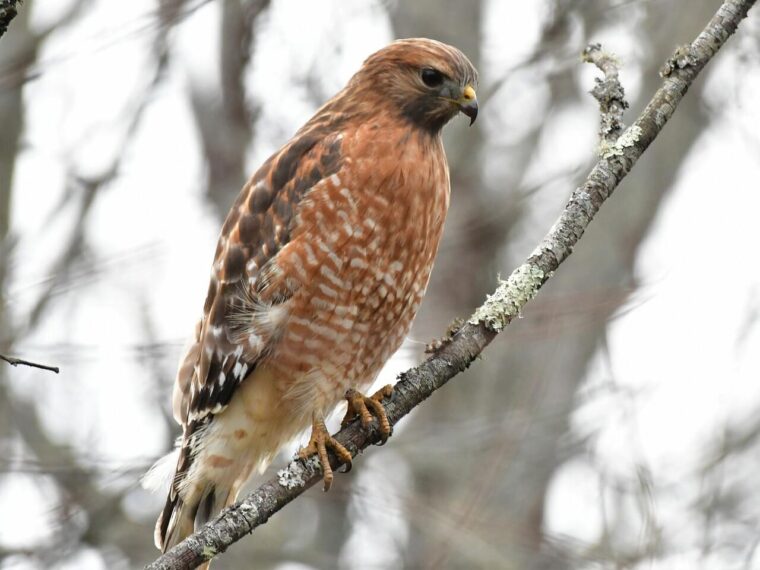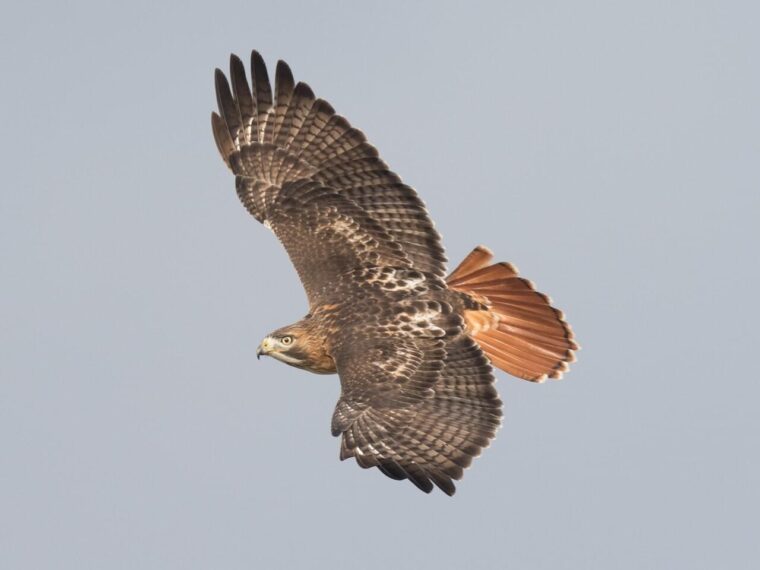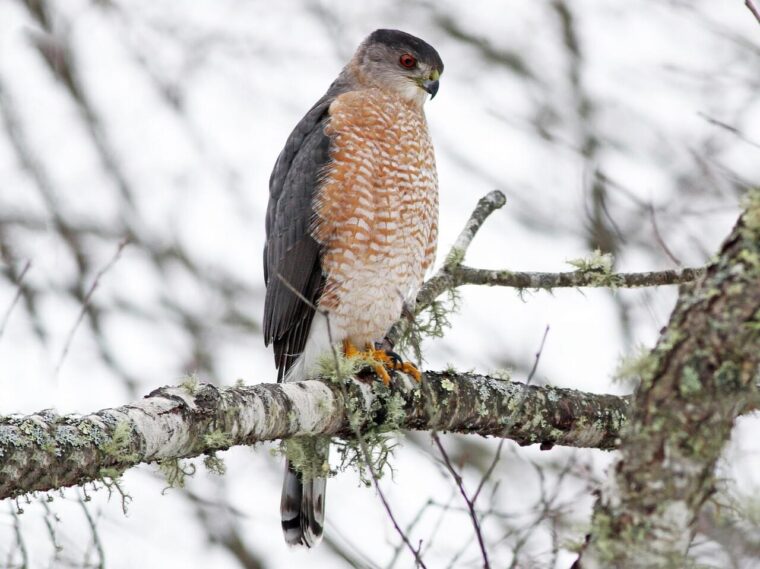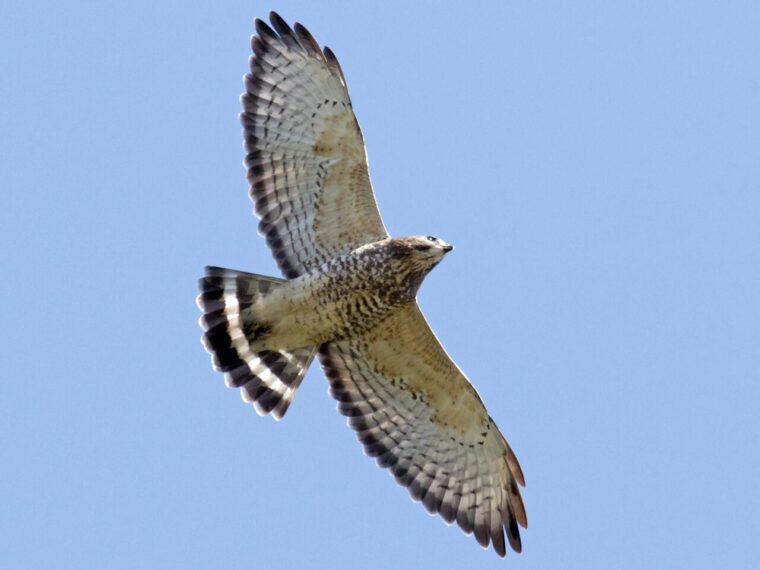The Goizueta Gardens at the Atlanta History Center is home to many types of wildlife, boasting a surprising level of biodiversity. One of the most plentiful and visible types of wildlife on campus are the many bird species that live on or pass through the gardens each year. In spring, many migrating warblers pass through, taking advantage of the mature forests and abundance of seed and fruit producing plants found on the property. Resident songbirds, like phoebes, cardinals, and robins, call the campus home all year long.
Along with these birds, the Goizueta Gardens also plays host to several species of hawks. Like the warblers and songbirds, the hawks found in the gardens vary during the year, as some migrate south for the winter and others can be found year long. The summer sees the most species in Goizueta Gardens; the following is an overview of the species that can be encountered on the Atlanta History Center campus, and a little about their habits, habitats, and life histories.
Red-shouldered Hawk (Buteo lineatus)
The most commonly seen hawk in the Goizueta Gardens is the red-shouldered hawk. Red-shouldered hawks live across eastern North America, with separate populations along the West Coast of the United States and in central Mexico. These hawks are creatures of dense woods. They prefer mature, wet woodlands with large trees and are often found near water. Red-shouldered hawks eat primarily small rodents, reptiles such as snakes and lizards, and frogs and toads. Red-shouldered hawks are mostly non-migratory, with the exception of some of the farthest northern populations.
Red-shouldered hawks can be seen and heard all year long in the Goizueta Gardens. They can be seen perched in high trees, often along the stream that winds through campus. They emit a high pitched kee-ah call repeatedly, especially during breeding season in late spring. These hawks have nested several times on the History Center campus; the same hawks will return to their nesting territory year after year.
Red-tailed Hawk (Buteo jamaicensis)
This species of hawk is fairly uncommon in the Goizueta Gardens. Largely a bird of open fields and rural landscapes, the forested nature of the Atlanta History Center campus does not lend itself to red-tailed hawks. Red-tailed hawks are easily recognized by their large size and clearly red tails. These are most often seen flying high over the Goizueta Gardens, riding warm currents of air as they scan the landscape below for prey, mainly small mammals. Red-tailed hawks have a very large range, found throughout North America from just south of the Arctic to Panama, occupying many different habitat types in between.
Cooper’s Hawk (Astur cooperi)
The Cooper’s hawk is a small hawk with a black and white striped tail that is most frequently found in mature forests with large trees. Cooper’s hawks are year-round residents of Goizueta Gardens, and can be seen flying quickly through the forests on campus in pursuit of other birds, their prey of choice. These hawks are expert flyers and can shoot through the canopy with unerring accuracy. Cooper’s hawks use tall trees with large canopies for nesting, but no nesting activity for this species has been observed in the Goizueta Gardens, likely due to the territorial nature of the resident red-shouldered hawks.
Broad-winged Hawk (Buteo platypterus)
The most unusual hawk found in the Goizueta Gardens is the broad-winged hawk. This small hawk is most commonly heard rather than seen, calling out with a high-pitched whistle from the tops of tall trees or while soaring overhead. Found in eastern North America in the spring and summer, this hawk makes a long migration through Central America to overwinter in northern South America. At the Atlanta History Center, this hawk can most often be observed flying over the treetops in long circles, and can be identified by the solid, dark band along the ends of its wings. They prey upon a variety of small animals, from lizards and frogs to mice and large insects.
It is unusual to see this hawk in urban settings, so the fact that they regularly return to the Goizueta Gardens each summer is a testament to the quality and appeal of the forest habitat that the gardens have preserved.
The variety and number of hawk species, and bird species more generally, that can be found in (and above) the Goizueta Gardens at the Atlanta History Center is a direct testament to the quality of the habitat here. The gardens are managed for biodiversity, with many native plants selected to help pollinators thrive and much of the remaining forest managed as a natural landscape. The insect and plant diversity drive small bird, amphibian, small mammal, and reptile diversity which in turn builds a robust base of prey for larger mammalian and avian carnivores. Please come and visit these unique and ecologically complex gardens soon and see how many hawks and other creatures call this small landscape home!




